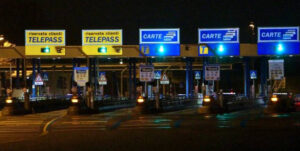 San Marino (Stato) viene declassato di un notch da “A” a “BBB+”.
San Marino (Stato) viene declassato di un notch da “A” a “BBB+”.
particolarmente significativi:
– declassamento a causa del deterioramento del settore finanziario, che potrebbe dare luogo a passività di contingenza (i.e. garantire per le banche);
– preso atto della ricapitalizzazione CARISP ma possibile revisione al rialzo del costo del salvataggio per lo Stato;
– assenza di un credibile prestatore di ultima istanza, no accesso alla finestra di rifinanziamento della BCE.
– mancanza di un “track record” (ossia uno storico) nell’emissione di obbligazioni (debito, titoli di Stato).
MA
– manteniamo investment grade (ossia le tre B) grazie a una serie di fattori fra cui “istituzioni politiche stabili ed efficaci”.
FORSE ANCORA NON SANNO DELLA CRISI DI GOVERNO?
http://www.fitchratings.com/creditdesk/press_releases/detail.cfm?print=1&pr_id=755853
Fitch Downgrades San Marino to ‘BBB+’; Outlook Negative Ratings Endorsement Policy
23 Jul 2012 11:04 AM (EDT)
Fitch Ratings-London/Paris-23 July 2012: Fitch Ratings has downgraded San Marino’s Long-term foreign currency Issuer Default Rating (IDR) to ‘BBB+’ from ‘A’ and Short-term foreign currency IDR to ‘F2’ from ‘F1’. The Outlook on the Long-term IDR is Negative. The agency has also downgraded San Marino’s Country Ceiling to ‘A+’ from ‘AA’.
The downgrades reflect the material deterioration in San Marino’s financial sector, which could give rise to potentially significant contingent liabilities for the sovereign, coupled with a weaker than expected outlook for the economy. Although public finances remain a rating strength, the poor fiscal performance has eroded the government’s strong liquidity position and revealed limited fiscal financing flexibility.
San Marino’s oversized financial sector (nearly 5x nominal GDP at end-2011) has sustained a series of shocks since 2009, which have eroded its competitive advantage and highlighted the urgent need for a new business model. The 2009-2010 Italian tax amnesty and international pressure against tax havens have jeopardised its status as an offshore financial centre based on attracting Italian deposits seeking discretion. Despite the end of the fiscal amnesty in 2010, deposit outflows have continued since then, increasing strains on banking liquidity in 2011. In the meantime, rising loan impairments have severely affected bank capitalisation. Fitch acknowledges the steps that the authorities have taken towards consolidating the financial sector, including the closure of around half of finance companies since end-2008 and the prospective merger of five banks in 2012. Nonetheless, the agency believes that the outlook for the financial sector remains weak, with most of the development opportunities focused on the small domestic market.
Strains on bank liquidity and solvency are all the more acute as Sammarinese banks lack a credible lender of last resort. San Marino is not a member of the eurozone and therefore lacks access to ECB refinancing. Other sources of liquidity are scarce. Access to foreign financing is made difficult by the withdrawal of foreign banking groups from San Marino. More importantly, although the central bank has managed to contain liquidity pressures since 2009, it has limited available liquidity of its own to support the banking system and is currently seeking to bolster this with lines of credit with foreign commercial banks.
Additionally, Cassa di Risparmio della Reppublica di San Marino (CRSM), the country’s largest bank, is in urgent need of recapitalisation due to the restructuring of its main subsidiary, Delta. The government has agreed to provide support of EUR60m (around 4% of 2011 GDP), but the cost of recapitalisation for the state could increase in an adverse scenario, further weakening the sovereign balance sheet
San Marino’s close ties to Italy – 90% of exports go to its larger neighbour – have an indirect impact on the enclave’s sovereign rating as a result of both Italy’s own poorer economic performance and outlook and the broader travails of the eurozone. Coupled with the weak outlook for San Marino’s financial sector, this means that the economy is facing a fifth consecutive year of recession in 2012. After years of difficult diplomatic relationships, the two countries signed a double tax agreement in June 2012 which should, upon ratification, remove San Marino from Italy’s black list of tax havens and therefore improve economic cooperation between them. However, in the context of prolonged stagnation in Italy, Fitch considers that San Marino’s economic prospects over the short term are unlikely to be significantly improved by this agreement.
Fiscal revenues have been affected by the recession and the retrenchment of the financial sector. The government, which used to run budget surpluses and accumulate cash balances before 2009, is now running a structural budget deficit (2011: 2.9% of GDP based on IMF estimates). Gross public debt, at 17.8% of GDP at end-2011, remains a rating strength, but is increasing fast. The country’s leeway is constrained by depleting cash balances and weak financial flexibility.
San Marino’s investment grade status remains underpinned by stable and effective political institutions, as well as a relatively diversified economy despite the size of the country. At more than USD60,000 at end-2011, income per capita is very high and more in line with ‘AAA’rated sovereigns. Nonetheless, Fitch doubts that San Marino can tolerate similar debt levels to its European neighbours given its size, lack of track record in debt issuance and lack of access to EU funding facilities.
The Negative Outlook reflects the elevated risks surrounding the restructuring of the financial sector and the risk that the cost of these could migrate to the state’s balance sheet at a time when the economy is struggling to recover from recession. Additional uncertainty relates to the prospect of economic recovery in Italy and the as yet largely undefined structure of a new business model for San Marino.
Higher than expected cost of CRSM recapitalisation for the state or the need for additional recapitalisations in the banking sector would exert downward pressure on the ratings. Also, poorer than expected macroeconomic performance, as a result of deteriorating financial sector results or weak performance of neighbouring Italy would be detrimental to San Marino’s ratings. Conversely, prolonged evidence of stabilisation in the liquidity, capitalisation, or loans impairments of the banks, improvements in the central bank’s ability to provide support to the banking sector and improved macroeconomic prospects would stabilise the rating.
Contact:
Primary Analyst
Amelie Roux
Director
+33 1 44 29 92 82
Fitch France S.A.S.
60 Rue Monceau
75008 Paris
Secondary Analyst
Gergely Kiss
Director
+44 20 3530 1425
Committee Chairperson
Paul Rawkins
Senior Director
+44 20 3530 1046
Media Relations: Peter Fitzpatrick, London, Tel: +44 20 3530 1103, Email: peter.fitzpatrick@fitchratings.com.
Additional information is available at www.fitchratings.com. The ratings above were solicited by, or on behalf of, the issuer, and therefore, Fitch has been compensated for the provision of the ratings.
Applicable criteria, ‘Sovereign Rating Methodology’, dated 15 August 2011, are available at www.fitchratings.com.
Applicable Criteria and Related Research:
Sovereign Rating Methodology










